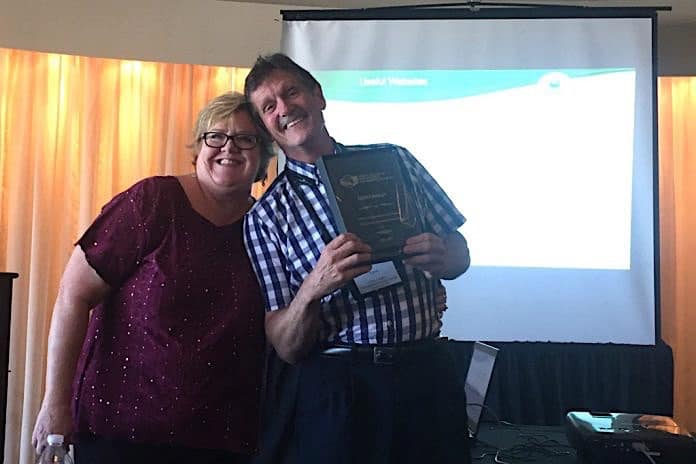Diana Hollander, the state director of student transportation at the Nevada Department of Education, was on tap to become the new president of NASDPTS this month at the conclusion of last week’s national conference in Kansas City. But she stepped into the role early on Aug. 1, following the resignation of Leon Langley.
As School Transportation News and the industry prepared earlier this fall for the recent NAPT Summit in Kansas City, Missouri, we sat down with Hollander to discuss the changes to the board of directors as well her goals and NASDPTS’ standing in the industry as a policy influencer, especially in regard to school bus lap-shoulder restraints.
School Transportation News: What are your major goals and objectives for the next two years?
Diana Hollander: I have many goals I’ve listed below, in no particular order:
- Increase membership and attendance at the annual conference.
- Complete the conversion from a paper system to an automated system that will handle membership, emails, website and event registration.
- To provide the best leadership possible that will assure that our mission to lead, assist and motivate the Nation’s school transportation community continues.
- To encourage participation from the next generation of State Directors on the Board.
- To come up with a brilliant idea or position that will cause a national shift in school transportation.
STN: It could be argued that NASDPTS updated its position on lap-shoulder seat belts, essentially recommending them for all school buses, and NHTSA and the National Safety Council have since taken the recommendation a step farther. What are your thoughts of the association being a major public policy influencer?
Hollander: I view NASDPTS role as being the major public policy influencer with regards to school transportation at the federal level. It’s the most important thing we do. The position paper championed by Past-President Max Christensen did cause a national shift in the seat belt conversation. I believe the shift had actually been occurring for several years, but it was NASDPTS that changed the direction of the conversation.
Because of the work NASDPTS has been doing since its inception to foster relationships with our federal agency partners, we have assisted NHTSA, FMCSA, EPA, NTSB and others in projects and activities to advance student safety for over 40 years. One of the most important things NASDPTS does to foster these relationships is travel to Washington D.C. every year for the Capitol Hill Bus-In. We spend a couple of days meeting with several federal agencies that regulate school transportation. Because of this interaction, NASDPTS comments and input are often sought.
In the past year we have participated in meetings and/or provided input on entry-level driver training requirements, seat belts, DERA reauthorization, forward-collision avoidance and mitigation systems, and obstructive sleep apnea. I am very proud of these efforts and look forward to continued collaboration and support of our federal partnerships.
STN: Is there also a negative side to that? What do you say to any assertions that NASDPTS is made up of bureaucrats who have limited hands-on knowledge of school bus operations?
Hollander: The negative side is that not everyone will agree with you and you risk losing support. There are very passionate people in school transportation and you have to do what you believe is best for your members and student safety, even if there is not a consensus among your members.
I think it’s a valid point, but I don’t think of myself as a bureaucrat. My job is to provide support and guidance at the state level to school districts. Having the knowledge to respond to questions has been the most valuable service I provide to school districts here in Nevada. Being a member of NASDPTS and attending the annual conference has provided the opportunity to collaborate with other state directors which has provided invaluable access to knowledge, information and resources.
STN: In your opinion, what’s the industry’s next “great debate?”
Hollander: I’m not sure this is a great debate, but stop arm violators need to be addressed at the federal level. For me, this is the biggest issue because too many children are killed in the loading/unloading zone. The National Stop Arm Survey has now collected six years of data and we have learned that the number of violations continues to be consistent from year to year. How do we change those numbers and be able to report zero fatalities?
I also think there could be discussion on how technology is causing driver distraction. Are we encouraging drivers to rely on technology instead of basic driver skills?
STN: Meanwhile, NASDPTS has seen a recent reshuffling of its executive board following Leon Langley’s resignation and your sooner-than-expected ascension to president. What challenges did that cause to you as well as the association?
Hollander: Over the course of a year, a new executive director was hired along with a new administrative and member services director. Then along with transitioning to an on-line management system, the sooner-than-expected departure of Leon really didn’t create any issues for me.
STN: Thank you.
Editor’s Note: Reprinted from the October 2016 edition of School Transportation News, magazine and supplemented with information noted at the NASDPTS Annual Conference.
















